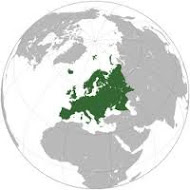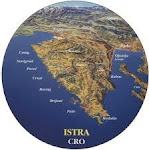My suggestion for the evening reading.
La mia proposta.
Udobna fotelja, topla čokolada i Puhač stakla s Murana.

"The Glassblower of Murano" is a wonderful combination of mystery, historical intrigue and love, written by an English/Venetian author. It tells a story of passion, genius and betrayal linking the present and the past. Nora Manin decides to leave her fractured life in London to start again in Venice - and there begins to unravel the story of her ancestor, Corradino Manin, the greatest artist of glass that the famous island of Murano ever produced.
 Firstly I've never been to Venice so I bring to this book nothing beyond the assurance from
Firstly I've never been to Venice so I bring to this book nothing beyond the assurance from everyone else that it is a magical place and really we should go one day and preferably on this. Leonora Manin, a direct descendant of the great 17th century Venetian glass artist Corradino Manin
heads to Venice to follow in Corradino's footsteps and ply her trade as a glassblower on the Isle of
Murano. There is of course treachery afoot and the past is inevitably going to reveal its darkest
secrets as Leonora becomes the advertising gift that the company have been looking for.
If a Manin can't turn around the ailing fortunes of the business then no one can.Interestingly given
the current financial nightmare dominating the news right now,the book more than dips a toe,
albeit unwittingly,
in the real worldNow please don't think I'm being derogatory or judgemental when I say this isn't high end literary fiction, more one of those books you'd read on holiday or when some relief from
the rigours of serious reading call. After a bout of ultra-serious reading of late The Glassblower of
Murano was the perfect antidote. The plot weaves back and forth from 17th century Venice to the
present day as old feuds surface and Leonora's life starts to become deeply embroiled in that of
her elusive ancestor's. Having perfected the art of mirror-making it was obvious Corradino might
be head-hunted (sorry) by the very person who needed a big batch order fulfilled and the unravelling
of quite how Corradino becomes Versailles mirror-maker extraordinaire to Louis XIV of France
kept me involved to the final page. Don't worry, I've given nothing away, this much is on the back cover blurb.Twists and turns abound and I was also intrigued by Marina Fiorato's technical detail here.
Making a flawless mirror took a lot of puff and one heck of a great big parison which you've then
got to put on your pontello, carefully slice your bubble and watch what happens. Plenty can go
wrong at the next stage too which is the mercury dip and of course no COSHH regulations in 1681. It was all fascinating enough to make me want to have a go...could I do it in the Aga top oven?
So if you fancy a trip to Venice from your armchair with a headless woman for company it's easy,
names in comments because there are three prize draw copies of The Glassblower of Murano
ready and waiting for Beautiful Books to send to the lucky winners, and in the meantime I'd love

Venecija, 1681.Venecijanska zrcala skuplja su od zlata, a umijeće puhanja stakla najljubomornije je čuvana tajna Republike. Otok Murano zato je i dom i zatvor puhačima stakla, a zloglasno Vijeće desetorice pomno prati svaki njihov korak. No, da bi zaštitio svoju tajnu kćer, najvještiji medu njima, majstor Corradino Manin, stavlja sve na kocku prodajući svoje znanje i dušu francuskom Kralju Suncu, Luju XIV...Stoljećima poslije, napuštajući London i ruševine svog propalog braka, strastvena i nadarena Nora Manin, djevojka u kojoj teče Corradinova krv, odlučna je da u gradu svojih predaka nauči zanat puhačice stakla. U potrazi za odgovorima, onima o ljubavi i onima o staklu, Nora će se uskoro susresti s demonima od kojih je bježao Corradino, a bezvremeno suparništvo oživjet će i u drevnim je radionicama dovesti u opasnost.U gradu nestvarne ljepote, u jednoj ljubavi i jednom krvavocrvenom staklenom srcu, Norina sudbina nerazdvojivo će se ispreplesti s Corradinovom, a sve njihove tajne bit će iznesene na svjetlo dana.

Murano je došao na glas kao centar proizvodnje stakla, nakon što je
Venecije 1291 godine, odlučila preseliti sve radionice za proizvodnju stakla na taj tada udaljeni otok u
laguni, jer su do tada izbijali česti neželjeni požari u tadašnjoj pretežno drvenoj Veneciji.
Ubrzo je ceh staklara stekao ugled najcjenjenijih građana na otoku. Od
14. stoljeća, staklari iz Murana - mogli su nositi mač (poput plemića), imali su i imunitet od kaznenih progona poput plemića, a njihove kćeri mogle su se udavati u najbolje plemićke kuće u Veneciji. S druge pak strane dobili su i neku vrst kazne, - nisu smjeli napuštati Murano pod nikakvim uvjetima. Na taj način
Mletačka republika željela je zaštititi tajnu proizvodnje stakla, što je u to doba bila izuzetno skupa i cijenjena roba. Ipak vremenom su mnogi staklari iz Murana, uz cijenu gubitka života i imovine otišli iz Murana u duge gradove po
Italiji, pa naposlijetku i u druge države poput
Engleske i
Nizozemske.
Proizvodnja stakla u Muranu
Staklari iz Murana ipak su držali monopol na proizvodnju kvalitetnih staklarskih proizvoda čak nekoliko stoljeća, jer se jedino u Muranu znalo i proizvodilo kristalno
staklo, kao i mnogi drugi staklarski proizvodi: emajlirano staklo (smalto), staklo sa zlatnim nitima (aventurin), višebojno staklo (millefiori), mliječno staklo (lattimo), te brojne imitacije dragog kamenja napravljenog od stakla.
I danas se u Muranu proizvode istim tradicionalnim metodama brojni predmeti od stakla ; od predmeta suvremene umjetnosti i dizajna, do nakita, lustera i figurica za svačiji ukus.
Neke od muranskih manufaktura su najpoznatiji svjetski proizvođači stakla, to su: Venini, Barovier & toso i Seguso.
Najstarija manufaktura za proizvodnju stakla u Muranu, koja radi i danas je Pauly & C. - Compagnia Venezia Murano, osnovana
1866 godine

A 9 minute water boat ride from the Fondamente Nuove , north of Venice, is located the island of Murano. This is where everyday life revolves around the glass making industry. Water plays a large role in life on Murano probably more so than in Venice and they have their own grand canal. The only bridge is ‘Ponte Longo', made of iron and built in 1866.
The oldest preserved evidence for the existence of the glass blower dates back to 982 and is found in Venice's archives. Documented evidence shows that in 1279, it was confined to the ‘rio dei Vetrai' where even today the oldest glass factories are located. The fortune of Murano came in 1291 when the glass makers were invited to leave Venice and move all the furnaces onto the island of Murano. This is a means of security to avoid the hazard of fire which would be very dangerous for Venice. Therefore the island became the most important centre for the glass industry in all of Europe up until the XVII century.
With the monopoly of production, Venice has been the protagonist in the history of glass pearls (conterie) since around 1200 to 1950. They are pearls obtained when working over a flame and were used as money for exchange with natives of colonial states. Glass workers were prohibited from emigrating from Venice by the threat of confiscation of property. The Republic didn't want competition arising from rival schools. Despite this, some teachers managed to emigrate illegally to Florence, London and to the rest of Europe.
The fall of the Serenissima republic, was accompanied by the decline of the craft of glasswork. The rebirth was encouraged in the mid 1800's by the Barovier, Toso, Seguso, Salviati families. The production is still today a handicraft and the majority of businesses have from 2-5 artisans even though some have 50-60 employees. The method of manufacture is the same, there are no machines and what counts is the ability as well as how much breath the artisan possesses. Every company had their own formula which up until the 1800's was secret, however with the advances in chemistry and research institutions these were no longer unknown. In the past the glass blower would show his expertise with intricate objects, however today they are no longer so complicated because articles would be too expensive.
It usually takes 3-4 people to finish an object, but in a large scale company it can be as many as 18. Artisans create objects of every colour, but only experts know how to obtain variants of red and yellow, the most difficult colours . Articles range from vases to unique pieces, statues to animals. The variety of glass in Murano is vast and can be quite expensive. Pieces signed by Barovier & Toso, Venini, and Carlo Moretti are a guarantee of international fame. There are also over 100 small businesses who work glass by candlelight and therefore don't require the furnace. They produce small pieces and souvenirs.




























































